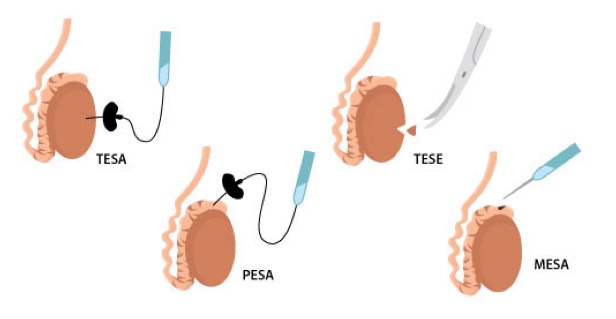Male infertility is a matter that has always raised concern amongst thousands of couples around the world. While low quality and quantity of sperm may be the major causes of infertility in men, the inability to effectively ejaculate may also prevent a man from making a woman pregnant even after having unprotected sex. In cases where azoospermia, vasectomy and testicular tube blockages are involved, TESA and PESA are the most ideal treatment options available. With TESA standing for Testicular Sperm Aspiration and PESA standing for Percutaneous Epididymal Sperm Aspiration, these methods involve less invasive retrieval of sperm from a man’s testes using a thin needle.
What is TESA and PESA?
As mentioned, TESA stands for Testicular Sperm Aspiration. This is an assistive reproductive procedure that involves the retrieval of testicular tissue through a needle attached to a syringe and injected through the skin on the man’s scrotum. TESA is usually a little more complex as compared to PESA and is performed if there is no sperm found within the epididymis, thus prompting for a needle to be inserted directly into the testicles.

PESA, which stands for Percutaneous Epididymal Sperm Aspiration, is a less complex sperm extraction procedure as compared to TESA. It involves insertion of a needle into the man’s epididymis, the tube that connects to the testicles, for sperm retrieval.
When is TESA and PESA carried out?
TESA and PESA are usually carried out when a man’s ability to naturally release sperm via ejaculation is reduced by blockage of the vas deferens or epididymis. Though, PESA involves collecting sperm via a small needle that is inserted into the epididymis while TESA involves collecting sperm via a small needle that is injected directly into the testicles. Some of the conditions that may require TESA and PESA to be performed are discussed below.
Azoospermia
This is a condition where the man’s ejaculate contains no sperm, accounting for between 10% and 15% of the causes of male infertility. This could be as a result of blockage in the sperm delivery system or reduction in the amount of sperm produced in the testes. Whether a man is suffering from obstructive or non-obstructive azoospermia, sperm can be retrieved using PESA or TESA depending on its severity. If there is sperm within the epididymis, then PESA will be used, and if not, then TESA will be the ideal sperm retrieval option.
Testicular failure
Due to chromosomal abnormalities caused by conditions such as Klinefelter’s syndrome or other abnormalities of the Y chromosome, a man may experience testicular failure. This disorder reduced the ability of the testicles to produce and store enough sperm that can make their way into the woman’s uterus during ejaculation. In this case, PESA or TESA may be used to collect any sperm that may be in the epididymis or testicles for IVF.
Varicocele
This condition is characterized by benign testicular cysts that may arise from a mass of varicose veins forming within the spermatic cord or epididymis. This may cause blockages that will definitely affect the flow of sperm out of the testicles and epididymis. To retrieve sperm from a man suffering from this condition, then TESA or PESA will work best.
